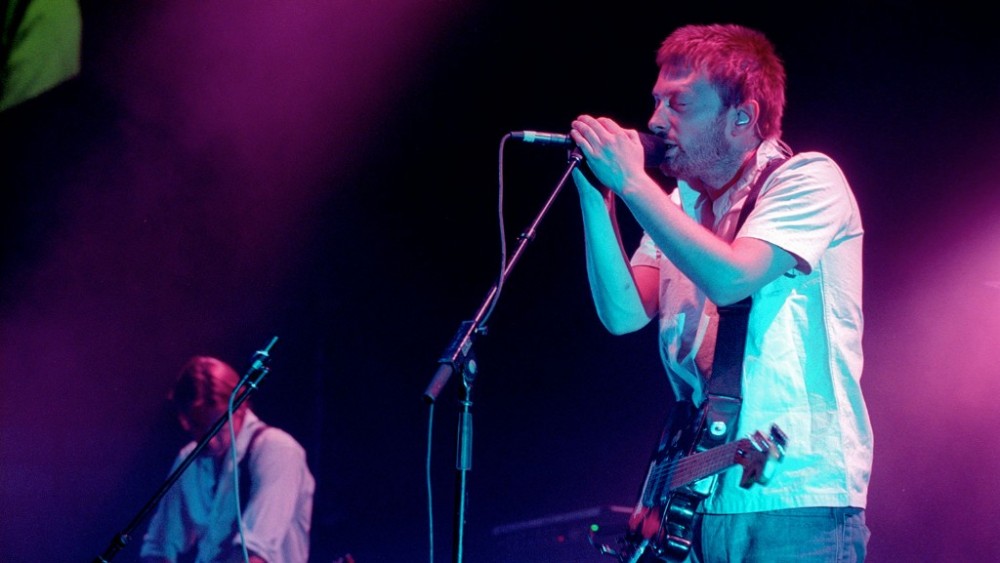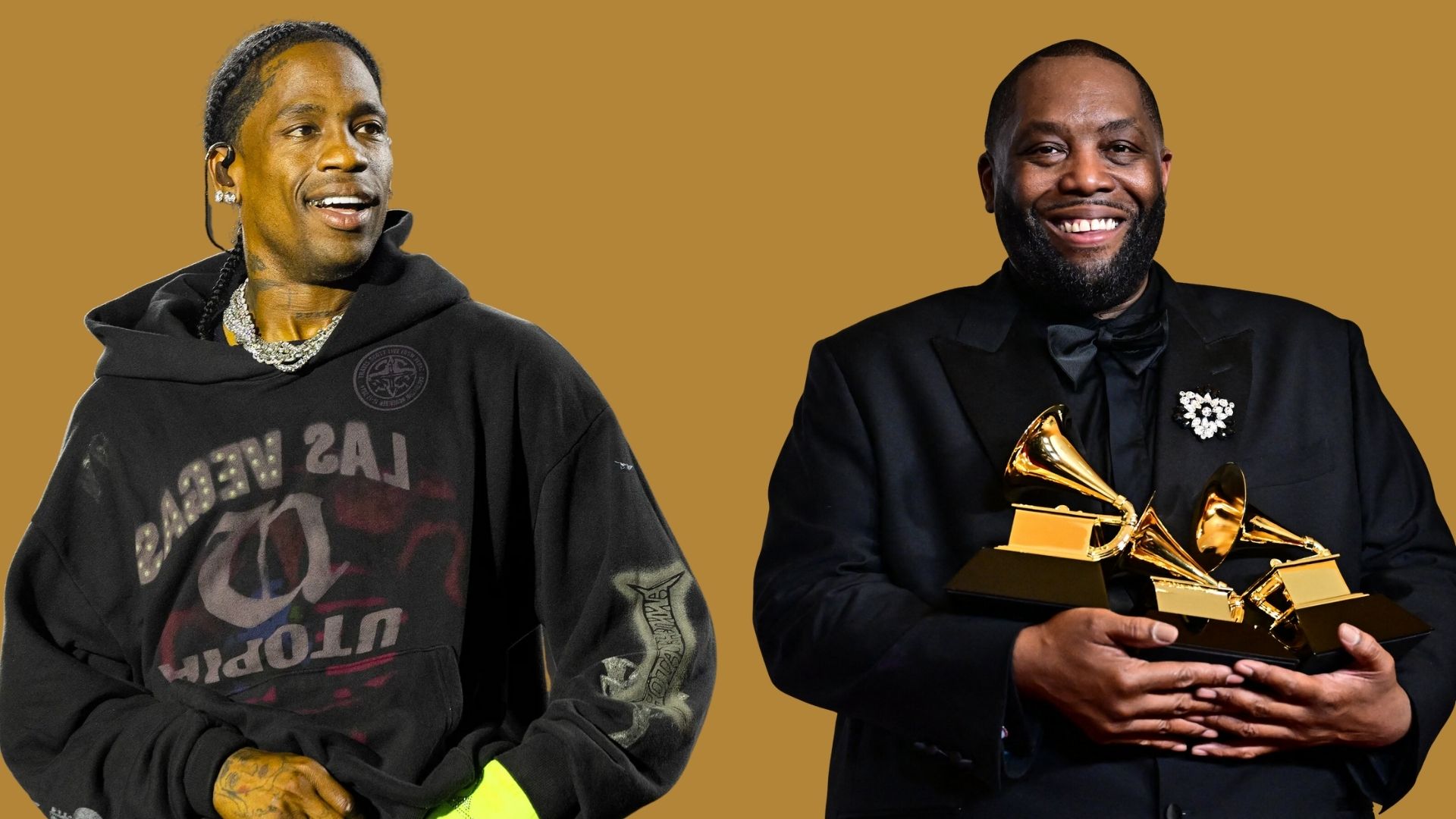Following our Billboard staff-picked list of the 100 greatest songs of 2000, we’re writing this week about some of the stories and trends that defined the year for us. Here, we look at how twenty years ago, Pitchfork’s unrestrained, perfect 10.0 review of Radiohead’s Kid A album changed the way people thought about music criticism — and why it remains a touchstone for critics and a milestone in Pitchfork history, even as the site has changed dramatically in the two decades since.
Ryan Schreiber had never seen a shooting star before. At least not one like Brent DiCrescenzo. In 1998, the 22-year-old Schreiber published a call for writers on his fledgling indie music website Pitchfork, which he had launched a few years prior. An early twenty-something DiCrescenzo replied, and the young founder was immediately impressed.
“His voice was really well-developed already, and totally unlike anyone else’s,” Schreiber remembers. “He had a lot of different modes. Some of his reviews were super dense with pop culture references, making connections between the music and different mediums — and others were almost like scripts, very dialogue-heavy, exploring outlandish scenarios.”
Over the next couple years, Pitchfork would slowly establish itself as one of the internet’s premiere music websites, with Schreiber viewing DiCrescenzo as the site’s “star writer.” However, it wasn’t until Oct. 3, 2000 that the rest of the music criticism world would begin to associate DiCrescenzo with such celestial imagery. That was the day that U.K. art-rock giants Radiohead’s fourth album, the guitar-eschewing, largely electronic Kid A, was officially released — and the day that Pitchfork published DiCrescenzo’s perfect 10.0 review of the album. It began with the now-legendary lede, “I had never even seen a shooting star before.”
Though they were one of the most acclaimed bands of the late ‘90s, Radiohead’s previous album, OK Computer, had underperformed commercially upon initial release. But after rave reviews across the U.S. and U.K. piled in, the album picked up steam and had sold 1.2 million copies in the States by September, 2000 — one month before Kid A’s release. Pitchfork had named OK Computer the second-best album of the ‘90s in their 1999 decade list, and the band had a uniquely cultish fanbase that was brimming with unparalleled anticipation for the album’s follow-up.
However, the record’s release was bigger than just Radiohead themselves. As music critic Steven Hyden writes about in his forthcoming book, This Isn’t Happening: Radiohead’s ‘Kid A’ and the Beginning of the 21st Century, it was one of the first major albums that people experienced online; from its message board buzz and Napster leaks leading up to it, to the online reviews and digital discourse that followed.
“All these things that we take for granted now felt new and exciting then,” Hyden says. “Like reading the opinions of random strangers and learning about music that way.”
Pitchfork was on the front lines of this boundary-pushing reconfiguration of music criticism and consumption. Hyden notes how innovative it was for a review to be posted online the day an album came out, rather than in print a week or even month later. Schreiber was a massive Radiohead fan himself, and says that the rollout was extremely calculated. He had been building toward the release by stacking every section on the website with Kid A content, and he even reached out to Radiohead fan sites to let them know they were giving it a 10/10 so they could share the link.
“I remember the date like a birthday,” he says. “The web traffic was literally off the charts. I used a very small, local ISP and had a basic hosting plan, and the analytics maxed out beyond a certain point, which we reached that day.”
The review was much more than just its staggering score. DiCrescenzo managed to capture the historical awe of that moment with some of the most flamboyantly earnest, absurdly effusive, and borderline nonsensical bits of prose to ever be published in a legitimate music publication. Like many of his reviews, it was extremely long-winded and brazenly unhinged from the journalistic form and temperament of the time. If it were any other album then his review might’ve been a huge whiff; for the spectral Kid A, his extravagant style was undeniably effective.
“It sounds weird to say, considering I reviewed music for a living for years, but I kind of hate record reviews,” DiCrescenzo tells Billboard now. “They are formulaic and rely on oddly canonized vocabulary – nobody talks like this in real life. So, I wanted my reviews to make the reader feel how] the record made me feel. If the record made me laugh, I’d try to make the audience laugh. If the album made me emo, I would go heart-on-screen. Kid A immediately awed and excited me and made me want to gush about it.”
Other DiCrescenzo reviews would include imaginative scenarios, like emailing Jesus about Stereolab or being in a DJ competition against Basement Jaxx. (The latter pan, like many such Pitchfork reviews from the site’s early days that are no longer congruent with the publication’s current views, has since been deleted from the site’s official archives.) But he emphasizes that there wasn’t a sliver of irony in this one. As Schreiber describes it, DiCrescenzo was “trying to make you see fireworks.” He recalls that DiCrescenzo’s Kid A review was overdue, and by the time he had turned it in the piece had to be online the following day. Therefore, he didn’t have time to talk over the piece with the writer, or make any significant edits.
“I did realize from the first pass that it was going to] open us up to some amount of ridicule,” Schreiber says. “But I also knew it was going to make waves. I wanted Pitchfork to be daring and to surprise people, and Brent’s review, as usual, totally exceeded that standard.”
In addition to its literally starry-eyed opening line, the piece included such passages as:
“Kid A makes rock and roll childish.”
“Comparing this to other albums is like comparing an aquarium to blue construction paper.”
“The experience and emotions tied to listening to Kid A are like witnessing the stillborn birth of a child while simultaneously having the opportunity to see her play in the afterlife on Imax.”
DiCrescenzo says he hasn’t read the review in a couple decades, and doesn’t remember the specifics of writing it. Instead, what’s stuck with him over the years are the events that lead up to it: The magic of staying in Florence, Italy with a good friend and watching Radiohead perform in a piazza — which is the scene he describes in the review’s opening — and the act of pirating the record online and experiencing it the same way ordinary Radiohead zealots were.
“It took about 8-12 minutes per song over DSL, and the wait for each new track was agony,” he remembers. “I think this profoundly affected the way people assessed the record. You wait a quarter of an hour for a new Radiohead cut — and it’s four minutes of ambient noise. ‘What the f–k is this?,’ I’m sure some people] said.”
Perhaps DiCrescenzo’s scrappy, on-the-ground vantage point is why his review was so different. The piece was a proverbial fork in the calloused heel of what 20th century music criticism had become by the end of the ‘90s; stuffy, formal, reserved and backward-glancing. Hyden remembers people passing around the review to mock it because the writing was unlike anything you’d read in a professional music magazine. He compares it to “a gospel preacher raving in the street while high on mescaline” — but he also remembers how refreshing it, and other Pitchfork reviews, were at the time.
“Rolling Stone was putting Jar-Jar Binks on the cover,” he says. “Spin was chasing down nu-metal bands and pop-punk mooks. It was actually hard to read anything about a lot of indie music, so Pitchfork became a true alternative in that regard… It didn’t read like it was written by the people who got inside the exclusive clubs to hang out with the dudes from Interpol. They were the people who were stuck outside, making fun of the people who were inside.”
That style of writing was incredibly attractive to a young critic and Radiohead diehard like Ian Cohen, a current Pitchfork contributor who’s been writing for them since the mid-2000s. But years before he’d join DiCrescenzo’s ranks, Cohen was an adolescent music freak who considered “Radiohead guy” to be a primary aspect of his personality. “I’d leave parties, or not even go, so I could go back to my apartment and listen to Kid A completely alone,” Cohen says.
For someone like him, who cobbled together Kid A leaks just like DiCrescenzo did, Pitchfork was able to translate his excitement in a way other publications couldn’t, or weren’t interested in doing.
“When Pitchfork gave it a 10… it felt like a validation of everything I felt about it,” he says. “This was an instant classic and needed to be acknowledged as such, especially when Rolling Stone and such were giving it 4 stars out of 5]. Anything above that was reserved for a new Bob Dylan or U2 or R.E.M. album, or whatever.”
Hyden was around the same age when the album came out, and he had a similar relationship with the review. The lukewarm takes from Spin and Rolling Stone (who infamously gave Nirvana’s Nevermind a three-star review upon its release) came across as patronizing to a youthful obsessive like him.
“I think both pubs dinged Radiohead for taking themselves too seriously,” Hyden says. “But as a 22-year-old in 2000, I also took Radiohead extremely seriously. I’m sure I took them even more seriously than Thom Yorke did. Kid A to me was a major event, and Pitchfork treated it that way, too.”
Ultimately, the Steven Hydens and Ian Cohens of the world ended up on the right side of history. Kid A debuted at number one on the Billboard 200 and went on to be one of the most acclaimed albums of the decade (even Rolling Stone ranked it No. 1 on their Best Albums of the 2000s list). For Pitchfork, the Kid A review launched them into the public consciousness — Hyden didn’t even know the site existed before that day — and established its voice in the years to come.
Radiohead were a special case for Pitchfork; they were a massively popular band who were still highly respected by indie-minded listeners. But the site carved its niche mostly by covering virtually unheard-of artists, with the type of passion other publications reserved for aging stars.
“I think kids related to it as a generational thing, because you could tell we were all in our early 20s just by reading,” Schreiber says. “The site had that kind of cocky, stupid, invincible attitude kids can have before they have to actually start relating to people. Readers weren’t sure whether our reviews were supposed to be earnest or some kind of joke, which was OK — we weren’t either.”
By the mid-2000’s, the site’s rascally tone was essential to some and barbarous to others, but their influence was undeniable. As indie rock boomed commercially over the decade, Pitchfork is widely credited for launching acts like Arcade Fire, Sufjan Stevens and Clap Your Hands Say Yeah out of obscurity, with their reviews showing a demonstrable impact on albums sales. However, the publication is perhaps equally notorious for the careers they’ve “killed”: A 2018 Slate article rounded up a bunch of the website’s most savage pans from over the years, including their gif-only 0.0 review of Jet’s Shine On and DiCrescenzo’s 0.0 review of Sonic Youth’s NYC Ghosts & Flowers.
Schreiber called posts like the Jet piece “stunt reviews,” and eventually DiCrescenzo took the antics too far. In the original version of his review of the Beastie Boys’ 2004 album To the 5 Boroughs (archived here), DiCrescenzo spent the first 800 words or so detailing a series of interactions and disagreements he had with the rap group’s publicists, Nasty Little Man (who also represent Radiohead), over a number of years. In a retraction issued a week after the review was published, Pitchfork wrote on their homepage (also archived here) that DiCrescenzo had fabricated the scenarios he wrote about, specifically citing a number of “falsities” in the piece — a claim that DiCrescenzo continues to deny. Schreiber says today he regrets the way things were handled, saying that he was too green to properly deal with the situation. DiCrescenzo never filed another review for the site.
This entire sort of scandal would be completely out of character at the Pitchfork of the last decade. For better or worse, the publication’s voice, staff, and type of coverage is wildly different now than it was back in the DiCrescenzo years. No 10.0 scores have been handed out to new albums since 2010, while only a small handful of truly scathing reviews have run over that period — and few if any of their still widely read reviews are as conceptual as the types DiCrescenzo made his name on. (Pitchfork’s current editorial staff could not be reached for comment on this story).
In 2015, Schreiber sold the company to the mass media subsidiary Condé Nast (Vogue, The New Yorker, Vanity Fair), placing them behind the velvet ropes of cosmopolitan media that they seemed to be rallying against in their early days. Schreiber stepped down as Editor In Chief in 2018 (former Spin Editor In Chief Puja Patel took over his role) and then left the company altogether in 2019, and longtime Executive Editor Mark Richardson — who had contributed to the site since 1998 and was revered by its staff — also left in 2018.
The days of Pitchfork’s hyperbolic swings, both soaringly high and crushingly low, are largely gone, but the publication’s reach is significantly wider today than at the turn of the century — when Schreiber has estimated the site averaged about 2000 readers a month — and more inclusive in both its staff and its coverage, the latter of which is no longer dominated by overwhelmingly white, male indie bands. “Pitchfork is a ‘better’ site today than it ever was — more comprehensive, more diverse, better written, infinitely more professional,” Hyden says. “But it also doesn’t matter nearly as much as it did in the ‘00s. That’s not the fault of anyone who works there. The media, and the world, just changed.”
Richardson still looks back on the Kid A review fondly today — more as a moment in time than a reflection of present-day Pitchfork, or any other site. “It’s an artifact of a different era of the Internet, before the digital world completely dominated our lives,” he says. “It’s low stakes, ultimately — it’s just a record review. The album it describes really is great, and it’s a celebration of hearing something wonderful and thinking about the world differently. It’s hard to come down on that. I’d much rather look back on this than one of the site’s famous pans.”
Much in the way that Kid A was as important to the larger story of 21st-century music consumption as it was to Radiohead, Pitchfork’s evolution is more than just the trajectory of a sole website: It’s the story of music criticism’s transition to the online world. That being said, there are few reviews from this century that have endured in the critical memory like it has — to the point where quotes from it (particularly its opening line) still get referenced out of context on Twitter.
“I do think there is something to be said for the voice of the Kid A review,” Hyden says. “Flawed as it is, at least it’s distinctive. I think it’s hard to say that any music website has a unique voice now.”
Which isn’t to say that music criticism has reached its end — just that its next wind will likely come from somewhere as different from the Pitchfork mold as Pitchfork was from the ‘90s establishment. “It’s hard to imagine that the 2020 version of Ryan Schreiber would have any interest in starting a website,” Hyden continues. “That kid is on Twitter, TikTok, or some other app I’m too old to know about.”



